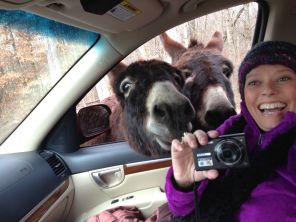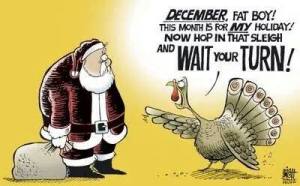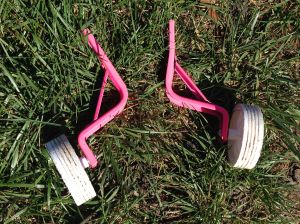Reflections on ‘An Open Apology to Dolly Parton’
 When I was writing my last blog post, “An Open Apology to Dolly Parton,” I had glanced up at a print on my mantel that says, “I see you, I get you, I love you.”
When I was writing my last blog post, “An Open Apology to Dolly Parton,” I had glanced up at a print on my mantel that says, “I see you, I get you, I love you.”
I originally bought it several years ago as a message to Nina, but over time I’ve hoped it has spoken to anyone who enters our living room and needs a message of understanding and acceptance.
I also hope it’s a mentality that Nina and I strive to live by — to see, to accept, and to appreciate people for who they truly are, regardless of our differences.
It’s not always easy, and I certainly didn’t get it right with Dolly Parton for too long. When I posted the apology, I had no idea — much less intention — that the letter would go viral with more than 2.5 million viewers and over 1,350 comments posted on the blog.
When WordPress editor Ben Huberman asked to do a Q&A for WordPress Discover about the response, I said that based on the comments I’d read, the post seemed to either strike a chord of harmony or hit a sensitive nerve about regional, class, gender, or political divides. But a main thread through the comments reflects just how deeply Dolly Parton’s altruistic acts, not to mention her talents, have touched people.
For example, Chris Carrier wrote, “I’m a volunteer firefighter and was deployed to Pigeon Forge on the 29th to fight fires. Early Wednesday morning around 3 am we were sent to DreamMore resort to sleep. Dolly opened her resort for firefighters to rest, shower and sleep, at no cost to us.” On that note, Jennifer Berkley responded that her two brothers were among the firefighters who stayed at Dolly’s DreamMore resort, and they found a sign hanging on their door that read, “Do not disturb! One of our firefighter heroes is sleeping.”
Other local readers mentioned that Dolly established an incentive program that has drastically raised the graduation rate of Sevier County high school students, and that she pays their tuition at a nearby community college. An article by Travis M. Andrews in The Washington Post, Tennessee Fires Brought Dolly Parton A New Mission-And An Apology, beautifully laid out how Dolly’s upbringing inspired both her down-to-earth attitude and her dedication to helping others, especially folks in her native East Tennessee region.
But it was a comment from “Tranny T.” that I kept returning to, and that captured how Dolly’s kindness has reached people on such deeply personal levels while simultaneously acknowledging the universal human spirit.
Tranny wrote that she grew up as a “poor little feminine boy in a small town in West Virginia,” whose family of six did without many things such as running water and electricity. But her mother sang Dolly’s songs, and when Tranny saved enough money to buy “White Limozeen” she wore the cassette out from playing it so often.
After years of bullying, abuse, and a near suicide, Tranny moved to East Tennessee as a gay man at the age of 20. During a visit to Dollywood, Tranny encountered Dolly and burst out crying.
Dolly said, “Well good looking, why you crying?” Tranny told her how much she had inspired him as a child, and Dolly reassured the young man everything was going to be ok. Dolly then told him, “I see the sweetness of your heart in those gorgeous steel blue eyes and I bet there is a story to tell behind them!”
Several years later, after more experiences of hatred and brutality, Tranny once again came face to face with Dolly at a small concert in West Virginia. Tranny — now transitioned to the woman she felt she was always meant to be and not the gay young man Dolly first met — wrote that they looked at one another and then Dolly said, “I remember those beautiful eyes!”
Tranny was confused at first, but then smiled when she remembered what Dolly said years earlier. She wrote, “She then spoke and said, ‘Seems like all those past sorrows have finally faded away!’ I couldn’t believe it but it was like she knew what had happened to me as a child and how far I had come to where I am today … She didn’t miss a beat but with her loving and calm voice reassured me I was going to be ok again.”
Just as she had done when she was a young country girl who was drawn to the “painted lady” in Sevier County, Dolly once again saw the value and beauty in someone whom others had so easily judged and demeaned. And isn’t that what we all long for in the deepest core of ourselves — to be accepted, even celebrated, for who we truly are?
I see you
I get you
I love you
— Amy Rawe
* Regarding the print pictured above, if anyone knows the name of the artist please let me know. I can’t make out the signature, and there is no identifying information on the back. I bought it from a man at the Artsclamation! show in Knoxville, held at Sacred Heart Cathedral School at least two years ago, possibly longer.

 I’ll be honest. I used to think you were a bimbo. I used to think you flaunted your big boobs, teased hair, tiny waist, and your syrupy-sweet southern accent to sell yourself and your brand as a country singer. Granted, I was raised in the Midwest and lived as an adult for many years in the Northeast. I didn’t get you, much less the South.
I’ll be honest. I used to think you were a bimbo. I used to think you flaunted your big boobs, teased hair, tiny waist, and your syrupy-sweet southern accent to sell yourself and your brand as a country singer. Granted, I was raised in the Midwest and lived as an adult for many years in the Northeast. I didn’t get you, much less the South.








 Stones, nuts, shell.
Stones, nuts, shell. Your small self slips under my covers
Your small self slips under my covers
